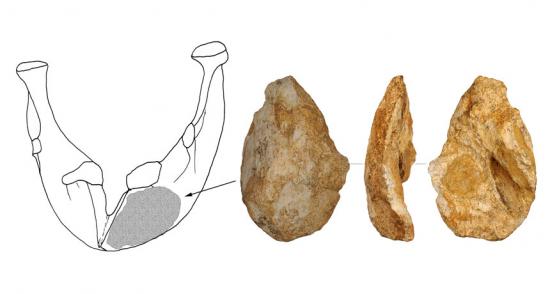People may have dug up roots with shovellike tool
Bruce Bower
Source - https://www.sciencenews.org/article/ancient-bone-hand-ax-identified-china?tgt=nr

This 24-centimeter-long hand ax, shown from three angles, is the earliest known bone hand ax from East Asia. Ancient humans used part of a stegadon jaw (left) to make the 170,000-year-old toolG. WEI ET AL/QUATERNARY INTERNATIONAL 2015
Researchers say they have identified the first example of a bone, not stone, hand ax crafted by ancient humans in East Asia. Makers of the curved, pear-shaped implement probably used it to dig up edible roots in a densely vegetated part of South China around 170,000 years ago, say paleontologist Guangbiao Wei of China Three Gorges Museum in Chongqing and his colleagues.
Part of a lower jaw from a stegodon, a now-extinct, elephant-like creature, provided raw material for the tool, the researchers report January 8 in Quaternary International. The jaw includes a wide, thick piece of curved bone with a grip-ready indentation on its inner surface, the scientists say.
Excavation of a Chinese cave in 2002 yielded the hand ax, along with bones of stegodons and other large animals. Until now, though, the artifact’s age was unknown. Wei’s team dated the find by measuring the decay rate of two forms of uranium in the fossilized bone.
Bone hand axes are rare, even outside East Asia. A handful of such tools previously unearthed in Africa, Europe and West Asia were made from limb bones, ribs and tusks of creatures such as mammoths. Stone hand axes, which preserve far better than bone artifacts, are more numerous and date to 800,000 years ago in South China.
G. Wei et al. First discovery of a bone hand axe in China.Quaternary International. Published online January 8, 2015. doi:10.1016/j.quaint.2014.12.022.